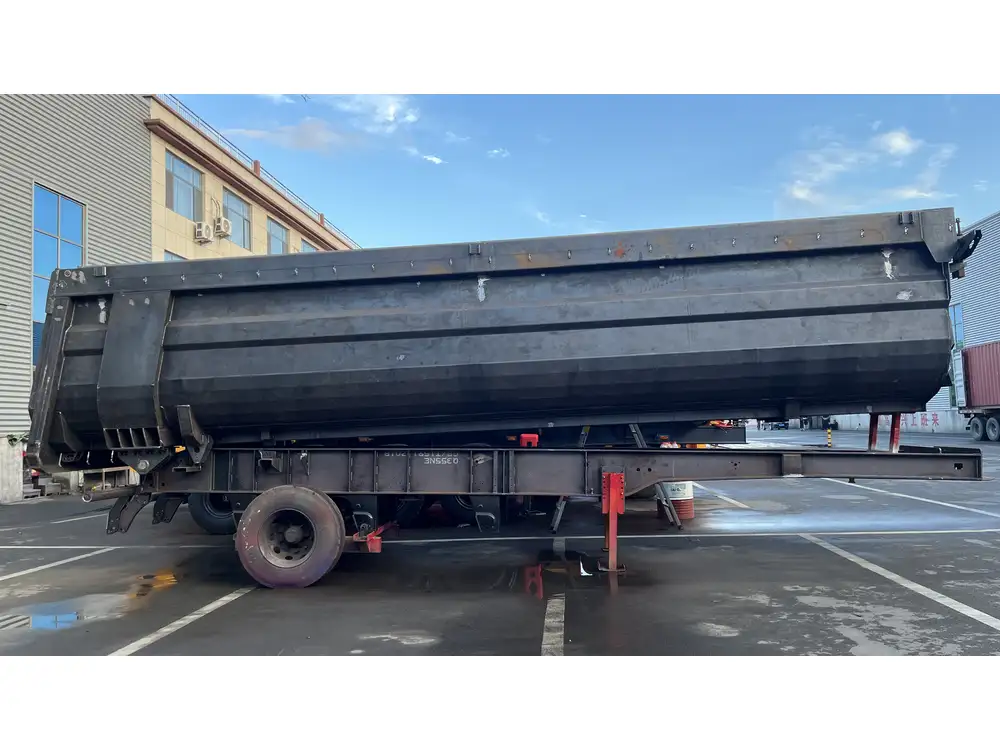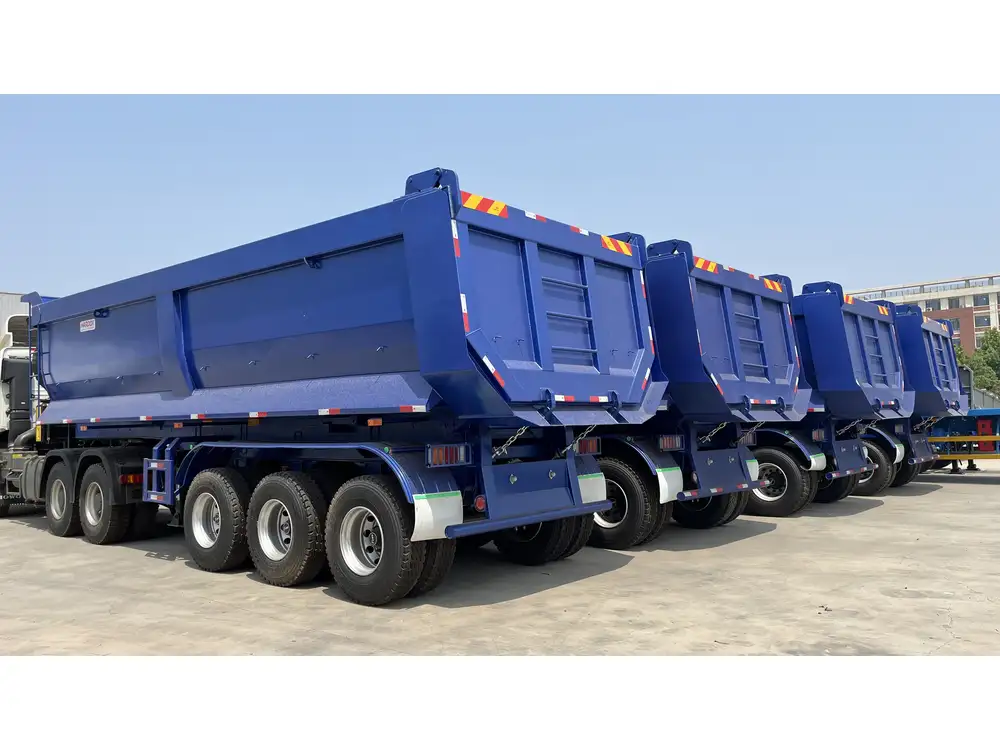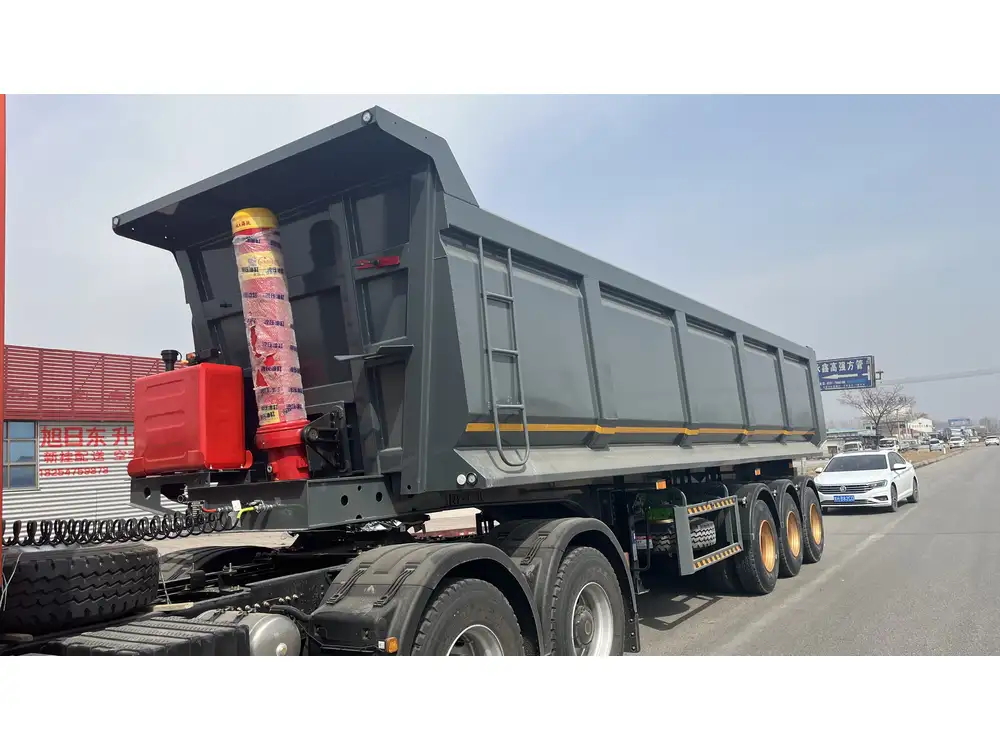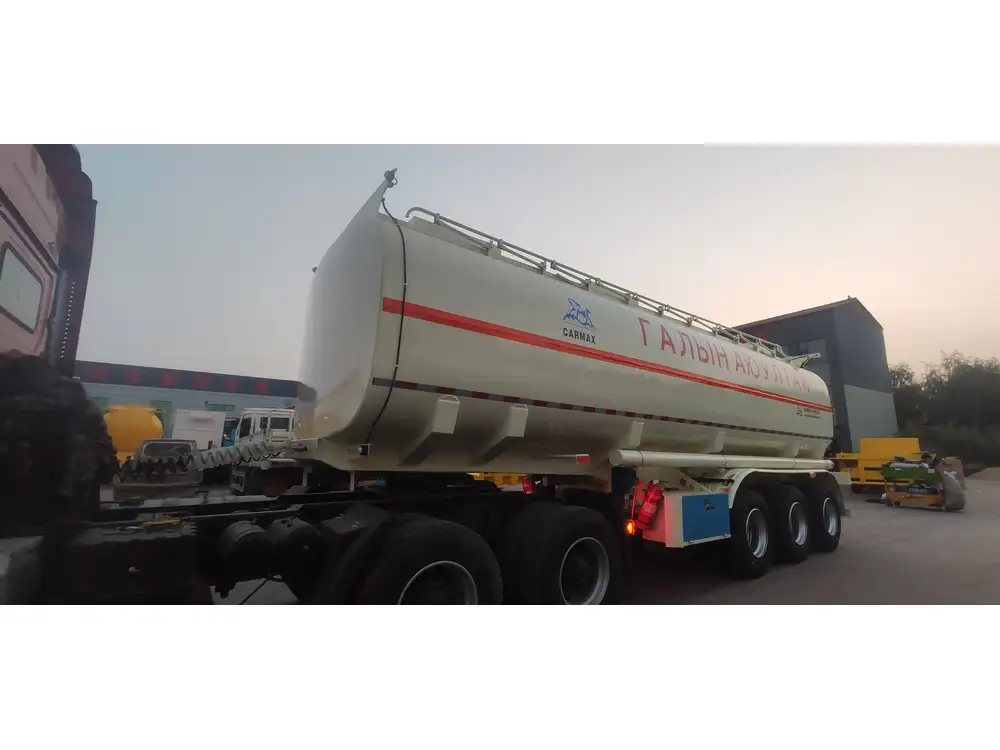In the world of freight transport, one often encounters the towering giants of the road—semi trailers. These essential vehicles come with a variety of specifications, but one question frequently arises: how tall is a standard semi trailer? The answer is not merely a statistic; it encompasses aspects of regulations, design, and operational factors that are crucial for manufacturers, carriers, and logistics experts alike.
What is a Standard Semi Trailer Height?
Common Dimensions
A standard semi trailer, primarily utilized in freight transport across the United States, typically stands at a height of approximately 13.5 feet (4.1 meters). This measurement is a critical factor for various reasons:
- Regulatory Compliance: Most states have established a maximum height limit of 13.5 feet for commercial trailers to ensure safe passage under bridges and overpasses.
- Cargo Capacity: The height influences how much cargo can be effectively loaded without violating height restrictions.
- Aerodynamic Efficiency: The design and height of a semi trailer affect its wind resistance, impacting fuel efficiency.
| Type of Semi Trailer | Typical Height |
|---|---|
| Standard Semi Trailer | 13.5 ft (4.1 m) |
| Flatbed Trailer | 13.5 ft (4.1 m) |
| Refrigerated Trailer | 13.5 ft (4.1 m) |
| Low-Profile Trailer | 12.0 ft (3.7 m) |

Variations by Trailer Type
While 13.5 feet is the standard height for most semi trailers, various types may have different dimensions tailored for their specific functions. Let’s take a closer look at the other common types of semi trailers and their respective heights:
- Flatbed Trailers: These often follow the standard height of 13.5 feet, although they can vary slightly based on the height of the load.
- Refrigerated (Reefer) Trailers: Designed for transporting temperature-sensitive goods, they maintain the standard height for consistency but may include additional insulation that can marginally affect overall height.
- Low-Profile Trailers: These specialized trailers for certain cargo may feature a height of around 12.0 feet (3.7 meters), intended for lower loads and ease of access.
Factors Influencing Semi Trailer Height
Regulatory Framework
Regulations dictate the maximum heights allowed for semi trailers, primarily to ensure safety on the roads. The Federal Highway Administration (FHWA) has stipulated a height limit of 13.5 feet, which most states have adopted. Understanding these regulations is crucial for compliance and to avoid potential penalties.

Terrain and Route Considerations
When planning a shipment route, considering the terrain is vital. Underpasses, bridges, and other overhead structures may not accommodate taller trailers. Utilizing height clearance guides and maps can help logistics managers ensure safe and timely deliveries.
Industry Standards and Innovations
Manufacturers continually innovate to enhance cargo efficiency and vehicle design. The integration of new materials and technologies allows for taller trailers without compromising safety or efficacy. This is an area worth exploring for industry professionals seeking to advance their operations.
The Impact of Height on Operations

Loading and Unloading Efficiency
Trailer height significantly affects loading and unloading processes. Loading docks must accommodate trailers of varying heights, which may necessitate specialized ramps or lifts. Hierarchical height considerations are important during the design of facilities that support freight logistics.
| Operation | Considerations |
|---|---|
| Loading Dock Design | Must support varying trailer heights |
| Equipment Usage | Height affects type of loading equipment |
| Safety Protocols | Employee safety depends on height clarity |
Fuel Efficiency and Aerodynamics
The height of a semi trailer plays a crucial role in its aerodynamics. Taller trailers can increase wind resistance, impacting fuel efficiency. Manufacturers are constantly researching optimal design adjustments that maximize height while minimizing drag.
Maintenance and Insurance Implications
Height can also have implications for maintenance and insurance costs. Taller trailers may pose increased risks in certain environments, affecting premium rates. Understanding these financial factors is essential for fleet operators wanting to manage costs effectively.

Frequently Asked Questions (FAQs)
1. Why is the height of a semi trailer standardized?
The height of semi trailers is standardized to ensure uniformity across the freight transport industry, make it easier to navigate routes, and comply with federal and state regulations.
2. Are there any exceptions to the height regulation for semi trailers?
Yes, certain specialized vehicles, such as those transporting oversized loads, may require permits that allow them to exceed the standard height limit.

3. How does the height of a semi trailer affect its load capacity?
While increasing height can theoretically allow for more vertical loading, weight distribution and total truck limits are subject to federal and state regulations, which often caps the overall height for safety reasons.
4. How can operators ensure compliance with height regulations?
Operators should familiarize themselves with local regulations, utilize route planning software that considers height restrictions, and conduct regular training for drivers regarding height awareness.
5. What are the implications of exceeding the height limit?
Exceeding height limits can result in accidents, damage to infrastructure, fines, and liabilities. Ensuring compliance is vital for operational integrity and safety.

Conclusion
Understanding the height of a standard semi trailer is crucial for manufacturers, fleet operators, and logistics managers. This knowledge not only ensures compliance with regulations but also enhances operational planning, safety, and efficiency. As the industry evolves, staying informed about height-related issues will remain essential for anyone engaged in transportation, whether for freight, logistics, or manufacturing purposes.
By keeping abreast of the regulations, evaluating the impact of trailer height on logistics, and recognizing the nuances of different trailer types, stakeholders in the semi trailer industry can make informed decisions that ultimately promote better logistics management, operational efficiency, and safety on the highways. With careful planning and consideration, the towering giants of the road can be managed effectively, ensuring that goods are transported safely and efficiently across vast distances.
This full exploration into the standard height of semi trailers covers regulatory aspects, operational impacts, and frequently asked questions that provide practical insights for industry professionals seeking to optimize their operations and ensure compliance.



